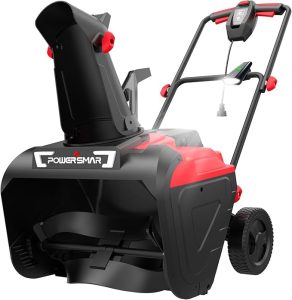
When winter blankets your property in snow, a snow blower can be a valuable tool for clearing driveways and walkways. However, it’s crucial to prioritize snow blower safety to prevent accidents and injuries. This guide will provide essential tips and best practices for residential users to operate their snow blowers safely and efficiently.
Understanding Your Snow Blower
Before diving into safety measures, it’s important to familiarize yourself with your snow blower’s components and functions. Read the user manual thoroughly and identify key parts such as the auger, chute, and controls. This knowledge will help you operate the machine more safely and troubleshoot any issues that may arise.
Snow Blower Safety Essentials
1. Proper Attire for Snow Blower Operation
Wear appropriate clothing, including slip-resistant boots, warm gloves, and eye protection. Avoid loose clothing that could get caught in moving parts.
2. Clear the Area Before Snow Blowing
Inspect the area you’ll be clearing and remove any obstacles like rocks, newspapers, or toys. These items can become dangerous projectiles if picked up by the snow blower.
3. Fuel Safety for Gas-Powered Snow Blowers
If you have a gas-powered model, always refuel outdoors and never while the engine is running or hot. Store fuel in approved containers and away from heat sources.
Safe Operation Techniques
To ensure snow blower safety, follow these operational guidelines:
1. Start the snow blower outdoors to avoid carbon monoxide buildup.
2. Keep hands and feet away from moving parts at all times.
3. Never attempt to clear a clogged chute with your hands – use a clearing tool instead.
4. Be cautious on slopes and avoid operating the snow blower too close to the edge of drop-offs.
5. Always turn off the engine and wait for all moving parts to stop before performing any maintenance.
Maintaining Your Snow Blower for Safety
Regular maintenance is crucial for snow blower safety. Before each use, check for loose or damaged parts, and ensure all safety features are functioning correctly. Keep the machine clean and well-lubricated to prevent malfunctions that could lead to accidents.
Snow Blower Safety for Special Situations
When dealing with wet, heavy snow or operating on gravel surfaces, adjust your technique to maintain safety. For wet snow, take smaller passes to prevent clogging. On gravel, raise the auger height to avoid throwing stones.
Storing Your Snow Blower Safely
Proper storage is an often-overlooked aspect of snow blower safety. Store your machine in a dry, secure location, away from heat sources and out of reach of children. For long-term storage, follow the manufacturer’s guidelines for fuel stabilization and battery care.
By following these snow blower safety guidelines, residential users can efficiently clear snow while minimizing the risk of accidents and injuries. Remember, safety should always be your top priority when operating any power equipment.








